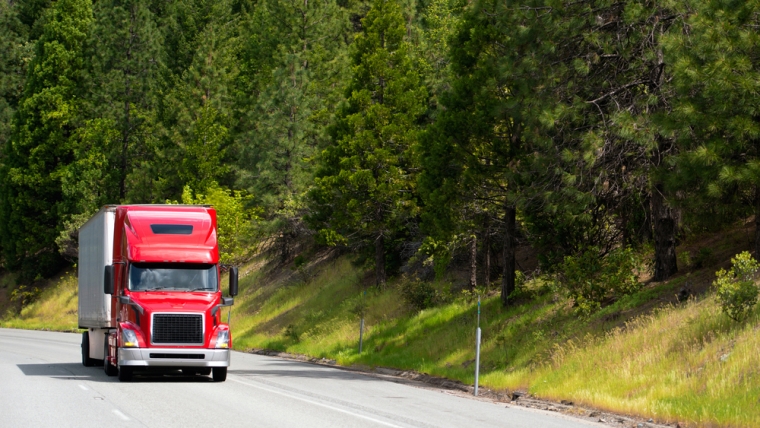
This is a re-post of an article originally published on pundit.co.nz. It is here with permission.
The strategy of mitigating global warming by sequesting carbon in trees involves three separate cycles: a carbon cycle, an energy cycle and a dollar cycle. I am not sure they are well integrated.
Our oil-based carbon cycle involves extracting underground carbon, passing it through internal combustion engines (ICEs) where, combined with oxygen, it is emitted as waste into the air adding to global warming. Trees convert the carbon-dioxide into wood. It is not quite an ecologically complete cycle; that requires the wood to be buried.
The energy cycle involves using the underground carbon to provide energy to the vehicles; the energy deficit is replaced by the sunlight the trees collect to store the carbon. It is a bit like using solar panels to generate the energy for electric vehicles. It is not an energy complete cycle but we don’t normally worry that one day the sun will run out of fuel.
To simplify, the dollar cycle involves the land producing exports which are used to purchase the oil imports to provide energy for the cars, which pay for the forests to store the carbon waste.Once the land is in forest though, it can no longer produce the exports to pay for the hydrocarbons which the vehicles continue to need. Note that if the land had been used for solar panels to fuel electric vehicles, the exercise cuts out the export-import part of the cycle, which does not produce any dollar paradoxes.
Yes, there is a paradox in the dollar cycle. Suppose we do not replace the ICE vehicles with electric ones. Eventually, the entire countryside would be covered with forests sequestering carbon from past hydrocarbon use but at the cost of having abolished our biggest generator of export income. (The significance of farm exports to the New Zealand economy is roughly comparable to the significance of energy exports to the Russian economy.) While what would happen then is uncertain, the reasonable projection is that the reduction in funds for imports without a corresponding reduction in the demand would lead to immiseration and out migration.
Some, perhaps of a neoliberal persuasion, will argue that the market always works, so there is no paradox. At the other end of the spectrum, the traditional New Zealand stance of the left, the argument is why expect the market to work? Where it does not work, just overrule it.
I am in between. Before coming to a policy conclusion, I want to know why the market is not working. Currently I have four explanations.
The first is that the carbon cycle is not complete. Perhaps we should require the forest growers to bury their carbon, charging ICE vehicles even more to pay for that. That would speed up the conversion to electric vehicles. It would, however, be politically disruptive. (As an aside, we like to ignore the importance of our ICEs’ contribution to global warming; vehicle users are a political third rail.)
The second explanation is that there is a difference in the time horizons between the climate-change strategy and the commercial strategy. The environmentalists are thinking long term with a discount rate of 2 percent p.a. or less, while business is more short term with a discount rate (the real profit return) of 5 percent p.a. or more. The consequence may be that business would be doing things that the policy makers did not intend. The practical response is that policy needs to reconcile the two discount rates so that commercial decisions take into consideration the lon-term impacts.
The third explanation is that markets only give good social outcomes if they are economically ‘complete’, in the technical sense that everything which matters is included in the market. No market is ever totally complete in this sense, but many are near enough to work reasonablely well in practice.
The environment is a common area where there is a lack of completion. One of the earliest discussions by economists involved air pollution, when they considered a factory belching smoke – this was a long time ago – and its soot polluting the washing hung out by neighbours. The factory did this because it was not being charged for the air it was using as its waste sink; the market was not economically complete. Today, we would illustrate the principle with waste into freshwater or the sea and observe that the usual policy response is to limit the discharge rather than charge the emitter for the use of the sink, which is the market solution.
But, as recognised by the early economists, air is also a sink. For the last two hundred years we have been discharging carbon into the atmospheric sink without – for most of the time – observing the consequence that the discharge was contributing to global warming with climate change and rising sea levels. Now that we do, we are more using a market mechanism rather than prohibiting discharging. That decision may be politically sensible, but it may be that the policy is not being properly implemented.
There may be a couple of other important resources outside the market: rainfall and sunshine. We see them as integral with the land they fall upon, but it is worth thinking about them in their own right.
It would be simple to summarise the foundation of New Zealand’s economic success in terms of the high land-to-people ratio, to which has been added good social infrastructure and able people. But in fact, most New Zealand land is not of particularly high quality. Its value is in its rainfall and sunshine; how we manage them is key to our prosperity.
Neither is separately traded. (The economic term is they are ‘joint inputs’.) I leave aside water here, for if it is not utilised, it runs off to another potential user. However, sunshine may be different. It is possible that forests are not a very efficient way of utilising the energy from the sun but since sunshine is not directly paid for, nobody notices.
The final reservation is that markets take time to adjust. (The consequence for sluggish physical markets, such as housing, can be speculative Minsky booms and crashes.) Sometimes it is more efficient to prod them in the required direction than to leave the price mechanism to drive them. That is the justification for the US climate change measures.
None of these reservations justifies thoughtless public interventions, any more than it gives comfort that market solutions will always give good outcomes. My tentative conclusion is that we should be relying less on forestry to solve our emissions targets and more on prodding users, especially ICE vehicles, towards emitting less.
*Brian Easton, an independent scholar, is an economist, social statistician, public policy analyst and historian. He was the Listener economic columnist from 1978 to 2014. This is a re-post of an article originally published on pundit.co.nz. It is here with permission.
8 Comments
It's a big assumption that continuous cover forests cannot produce products or exports after it has reached maturity. In my opinion if we accept that, we have become closed minded too early.
Healthy, diverse forests are much more than wood, energy and carbon credits. Such a narrow view points us back to BAU instead of the existing and potential bioeconomy.
Every member in that forest ecosystem from a microbe to the biggest kauri can be sustainably managed with plethora of products derived which can be of benefit to society. Research is going on in Universities across NZ on the bioeconomy and potential of our natives, bioactives.
If you look hard enough at quality resources like https://www.drawdown.org/solutions/table-of-solutions and the Carbon Farming Solution you realise that this needn't be climate or livelihoods, it can be and and
Surely we can do better
What happens with nice big forest fire. Who pays? Do the people who got money from the credits have to pay it back? Does the landowner have to pay for the carbon credits? Does the good old taxpayer (those that pay tax) have to stomp up again?
Would love to know what is planned.
In theory, the landowner has to replant, at their own cost.
The really interesting question though is what happens when an overseas corporate land owner has taken all the carbon credit monies, and transferred the land ownership into a shell company that they then turn their back on? Think the foreign owners will pay to replant? Think you can even track down who currently 'owns' the land? Think again.
Thanks for that - I long wondered.
It seems then that while operations which generate CO2 get charged for releasing it - the owners of a forest that burns and releases heaps doesnt have to pay for the release. Not quiet right really.
Trees are only a tiny, initial step in the process. Once a tree hits maturity it no longer achieves any significant additional carbon capture, so if we planted the entire countryside in pines tomorrow, in 50 years they would no longer be doing anything to counter our ongoing pollution.
The hard reality is that we need to shift almost 100% away from combustion and fossil fuels, and the only way to force that change is with financial penalties (or incentives). This topying with carbon credits is just the least painful initial step. The real deep pain is still to come, and is going to be very expensive in terms of lifestyle and economy and politicians only dare to nudge us along this path, rather than to plunge us deep into the changes that are needed.
As for those precious farm export dollars... how competitive will they be when the full carbon cost of processing and shipping those exports are included? You want to ship to the other hemisphere? Well then, you'l be selling at triple the price of their locally grown product. Farms might have been big earners when we could pollute for free. They might not be once the full costs come to bear.
Thought provoking but...
NZ has a food production ratio of about 1:80 (our 5 million population produces enough to feed 400 million). If we take the ILO figure of 5.5% of population (275,000) actually employed in agriculture, then that ratio changes to 1:1455. The UK, for example can't produce enough food to feed it's population. How many other countries are in a similar situation?
Don't worry about cars, start with planes.
https://theturnstone.substack.com/p/up-and-away?utm_source=%2Finbox&utm…
Thought provoking article, Brian. You might be interested in this paper which goes into carbon cycle and the role of the terrestrial biosphere in achieving carbon neutrality https://www.annualreviews.org/doi/10.1146/annurev-environ-112320-105050

We welcome your comments below. If you are not already registered, please register to comment
Remember we welcome robust, respectful and insightful debate. We don't welcome abusive or defamatory comments and will de-register those repeatedly making such comments. Our current comment policy is here.